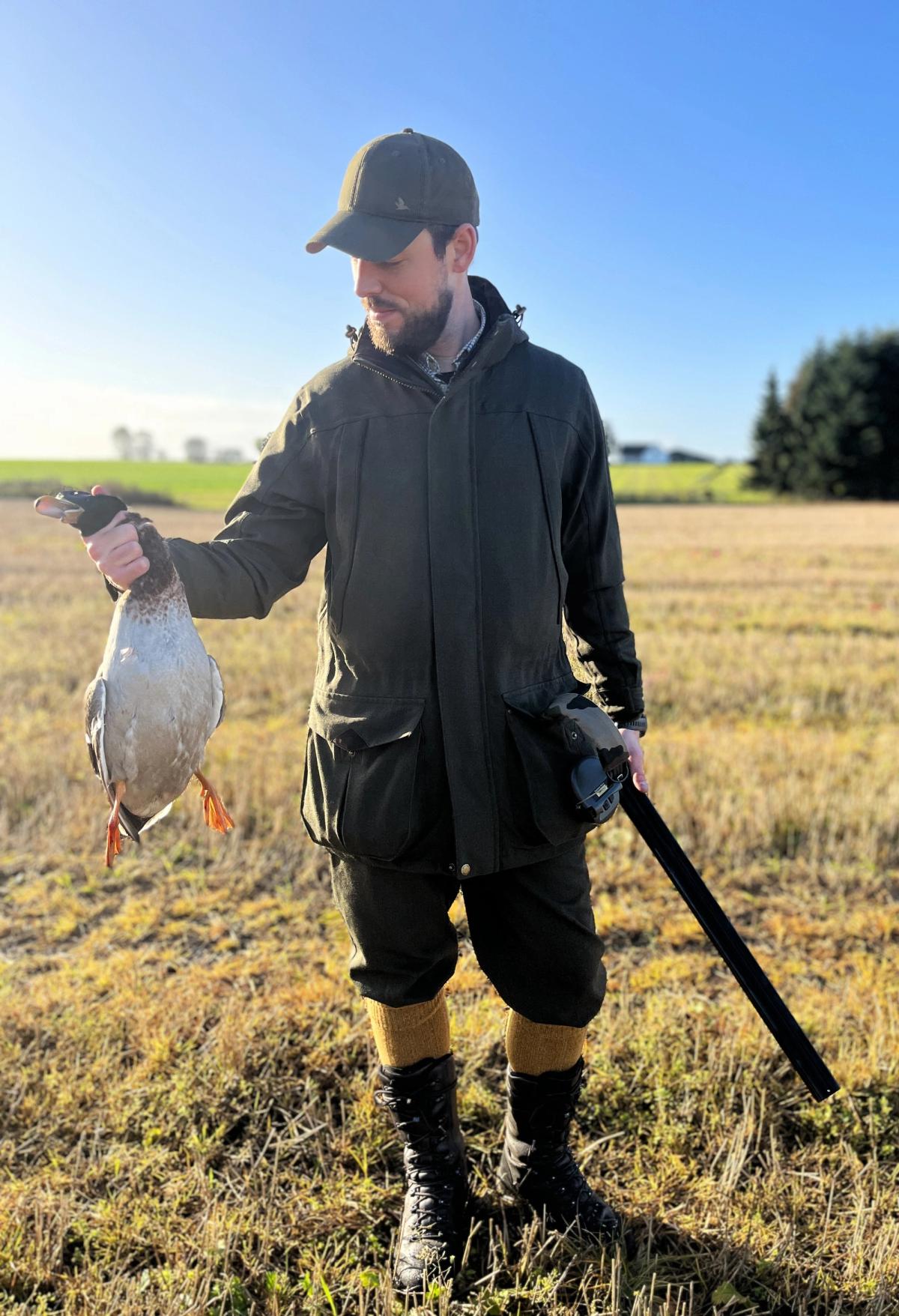New Hunter
A complete guide on getting started.
OVERCOMING THE OBSTACLES - A COMPLETE GUIDE FOR THE NEW HUNTER
Getting started within in the world of hunting can be a bit of a challenge. Traditions, rules, regulations, gear, shooting, finding a place to hunt, and a network are some of the many obstacles the new hunter has to overcome.
Read more about how to get started as a new hunter.
By Mark Lauritsen, Seeland Team Member
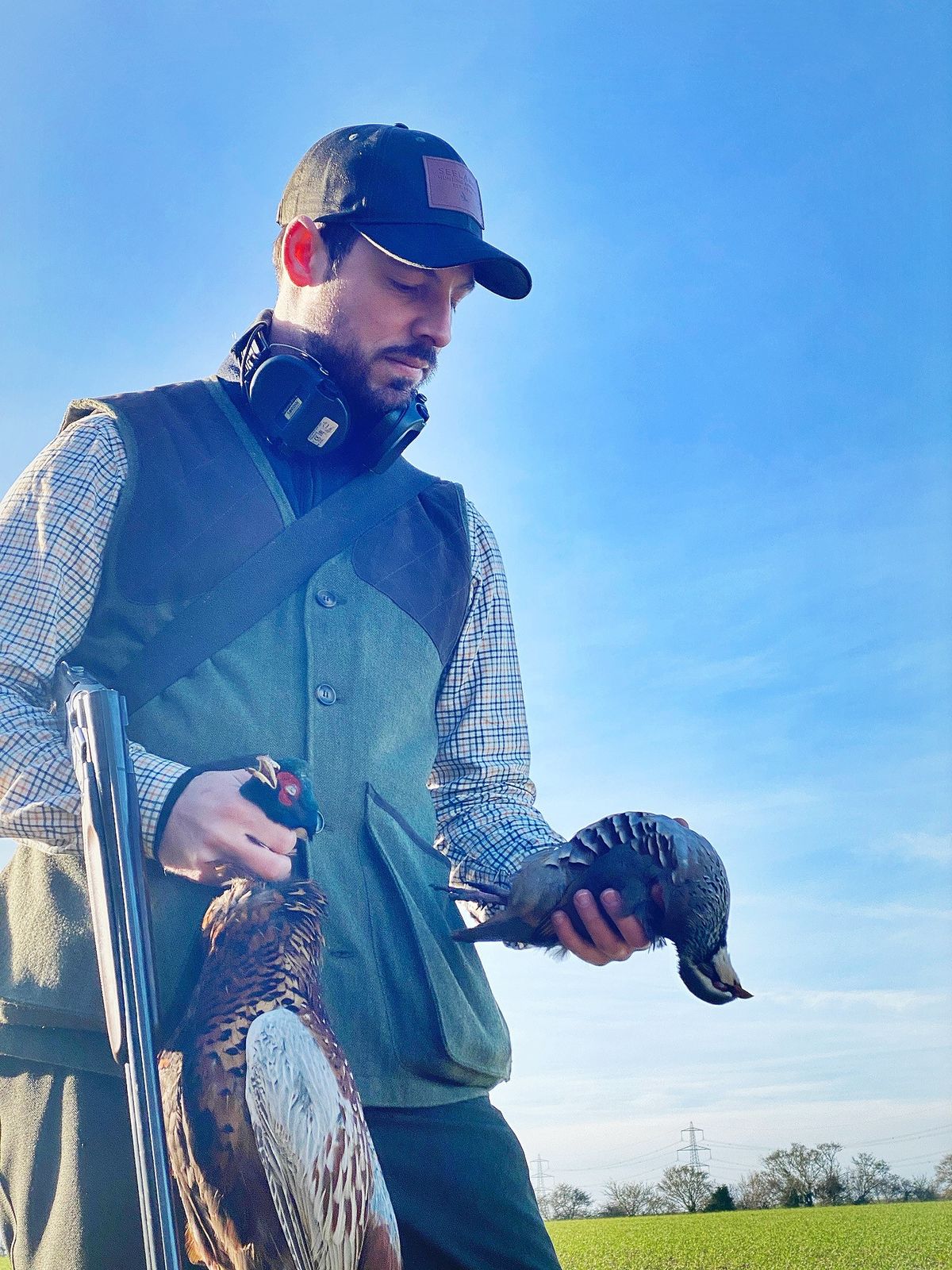
Tips for new hunters
If you ask 10 different hunters for advice, you will get 10 different answers. Consider me one such hunter with some advice to give. With 29 years of hunting experience under my belt, I, too, was once a new hunter, like yourself. I applied for my license the day I turned 16 but had been joining my grandfather on regular hunts for many years prior. It used to be, that if you were born into a family of hunters, you became a hunter yourself.
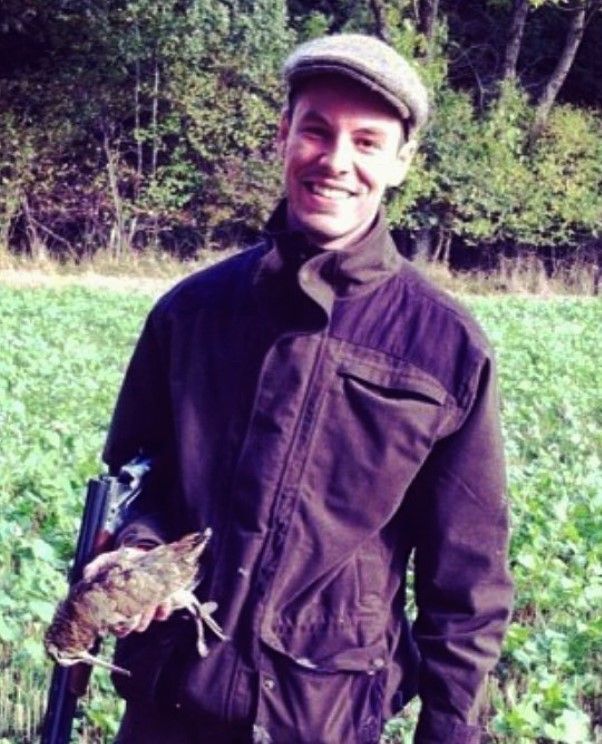
The desire, gear, and hunting knowledge are passed down from generation to generation, and if you met a "new hunter" on a hunt, it was usually someone who had been a beater previously and was now finally old enough to carry a weapon. But today, this is no longer the case. Hunting has become more popular than ever, both for men and women. That means, that a new type of “new hunter” is now becoming more common. In my opinion, it’s great to see the new level of interest in a sport passed down to me by my grandfather. However, this can also present a new challenge: If you haven’t been dragged into the world of hunting from an early age, you haven’t had the opportunity to learn hunting skills and receive the same education as someone who started at a young age.
So, for any new hunter reading this article, I would like to share some tips and advice that will hopefully help you as you start your journey with rifle and shotgun hunting. If you’re one of those who have been around hunting since you were young, a lot of this is something you might already know, but if the world of hunting is all new to you, I hope you will learn a lot.
Before the hunt
If you’re an adult, who has just taken a hunting license you might have a major advantage over the young hunter under 16 years old. Namely, purchasing power! Mostly, adults have a better income than teenagers with a day job and maybe even though they might have some savings to help realize their hunting dreams. But, but, but…what do you need to get started?
It is important to consider your needs; What type of hunting will you be doing? What type of environment will you be hunting in? What type of animal will you set your sights on? When you know what you want to do with hunting, you'll have a better idea of what gear you need.
Hunting clothes
My recommendation would be to consider investing in a shell suit with a waterproof jacket and trousers in green. Make sure your set has practical pockets, preferably with zippers, so that cartridges, gun permits, keys, cell phones and the like are safe and easily accessible when hunting.
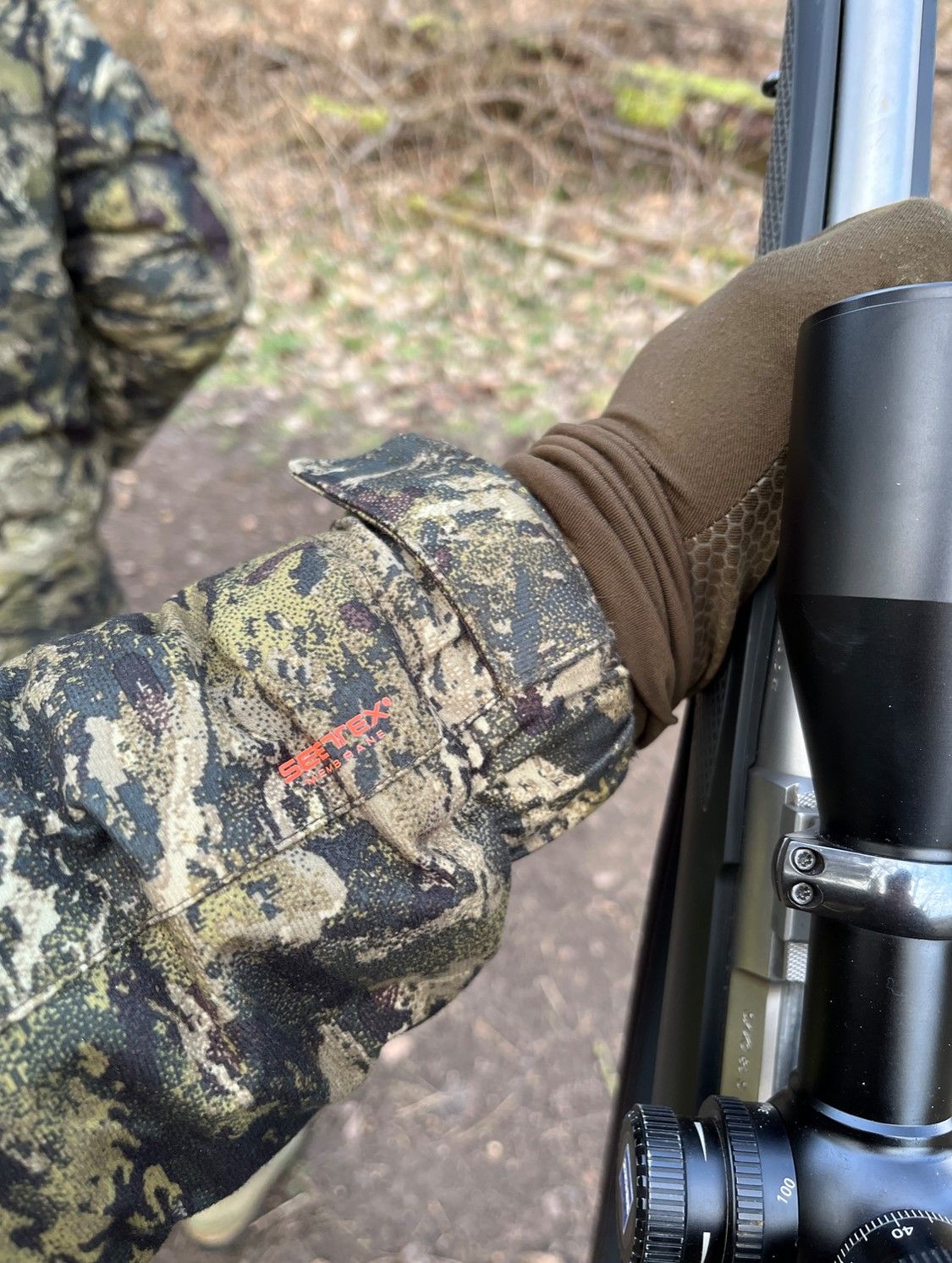
With this shell, you can add thicker base layers or a fleece in the winter and lighter layers in the summer and you're good to go. Camouflage or not is a matter of personal preference, but it will give you some advantages over prey that has good eyesight like foxes or bigger types of deer. But being camouflaged is only a part of it. You need to know how to move in the terrain, otherwise you will get busted, even if you look like a tree. Be aware that there are some types of hunts where blaze orange is a requirement to participate, for example driven hunts or some birdshoots. This varies from country to country and can also vary from one hunting syndicate to another, so be aware and ask if you’re invited or buy a spot on a hunt like that.
In the bottom of this article, you will find a selection of gear perfect for getting started.
Hunting weapons
Buying a weapon is a bit like buying a car. Do you need one that gets you from A to B? Or should it have, a leather steering wheel and sunroof? You can often find good used guns at a hunting store. If possible, look for a used gun from one of the larger brands recognized for their quality, such as Beretta or Browning for shotguns and Sako or Tikka for rifles. However, I would like to point out that in recent years, many rifle manufacturers have started to make some nice entry-level guns at a price that most people can afford. The important parts of the rifle, such as the barrel and trigger, are of the same quality as their more expensive models. At the same time, they have kept production costs down on the less "important" parts of the rifle, such as the aesthetics of the stock, using lower-grade wood or plastic stocks.
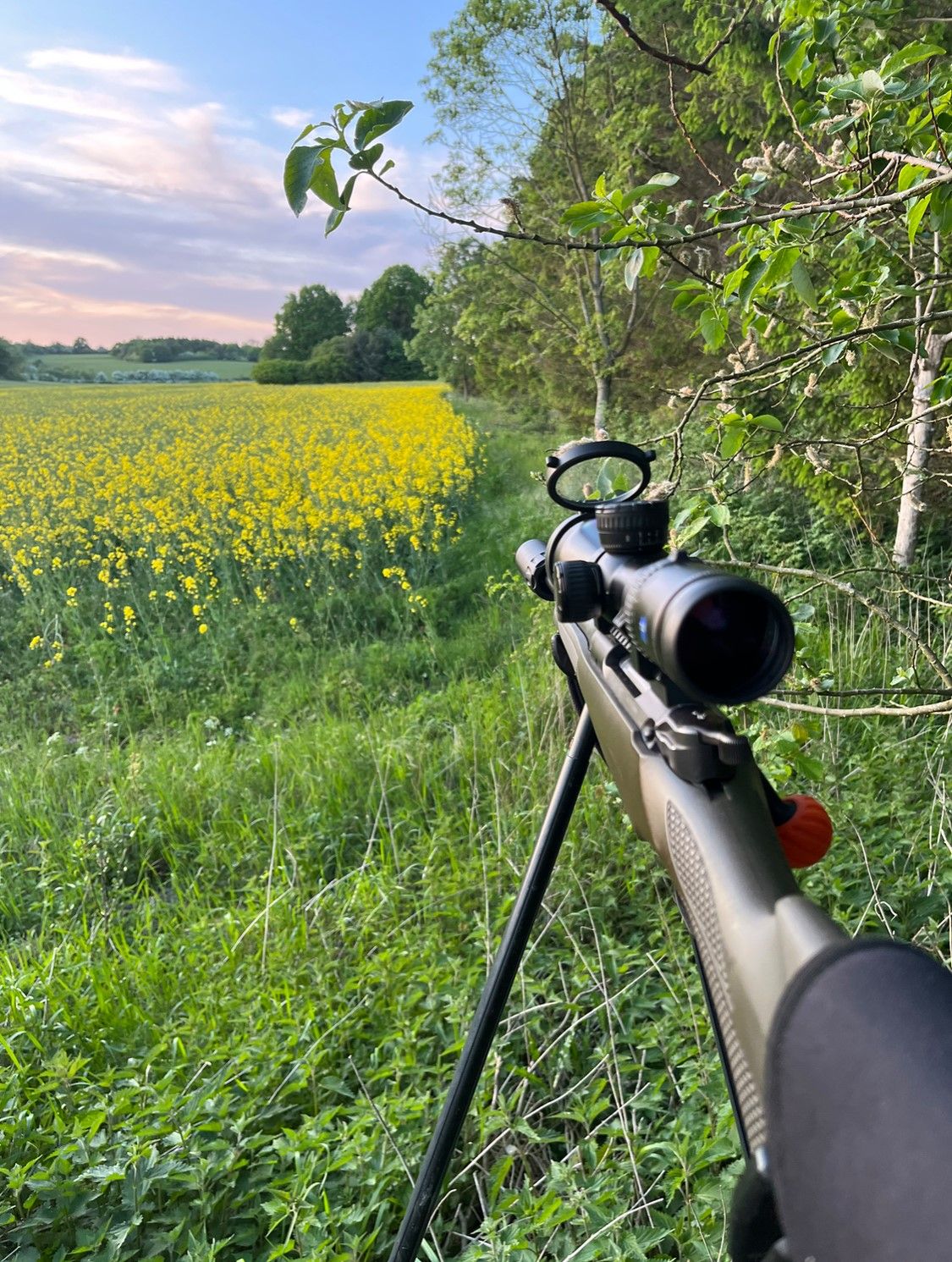
It's fair to say that every rifle available in stores is designed to function correctly. If, however, you encounter a situation where this isn't the case, the gunsmith who sold the rifle from his workshop is accountable, regardless of whether the firearm is new or pre-owned. If you happen to purchase a rifle that doesn't perform up to standard or has issues, it's advisable to return and discuss it directly with the gunsmith. Additionally, it's important to experiment with various ammunition types in your new rifle, as accuracy can differ significantly. Identifying a brand that your rifle responds well to is crucial for optimal performance.
Another good rule of thumb is that you should spend the majority of your rifle budget on the scope.
Low-quality optics can present challenges, such as poor shot accuracy or loosing accuracy over time, a tendency to fog up, or poor light intake. For most hunters, who typically shoot game at ranges of 50-150 meters, high-magnification scopes aren't necessary. Instead, opt for more compact scopes from a trusted brand, focusing more on having a low minimum magnification rather than a high maximum. Scopes with a magnification range of 2.5-10x are versatile choices, The magnification is low enough for shooting moving game at a driven hunting and precise aiming at distances of 100 to 200 meters and even beyond if you possess the necessary skills.
Remember that when you increase the magnification of your scope, you also increase the magnification of vibrations and human impact, and the lower the magnification you master shooting at, the longer distances you can train for with the same scope. Personally, I shoot with 4x magnification at 100 meters.
Other gear
It's easy to buy a lot of gizmos and gadgets. But at the end of the day, it's most important to have the basics with you. Let’s focus on essential gear: a reliable pair of binoculars, a sharp hunting knife, a good shooting stick (that you’ve trained with, of course) and sturdy rubber or hiking boots. With these basics, you're well-equipped for the hunt. It's more beneficial to allocate funds towards actual hunting experiences rather than sitting at home with a ton of gear and nowhere to use it.
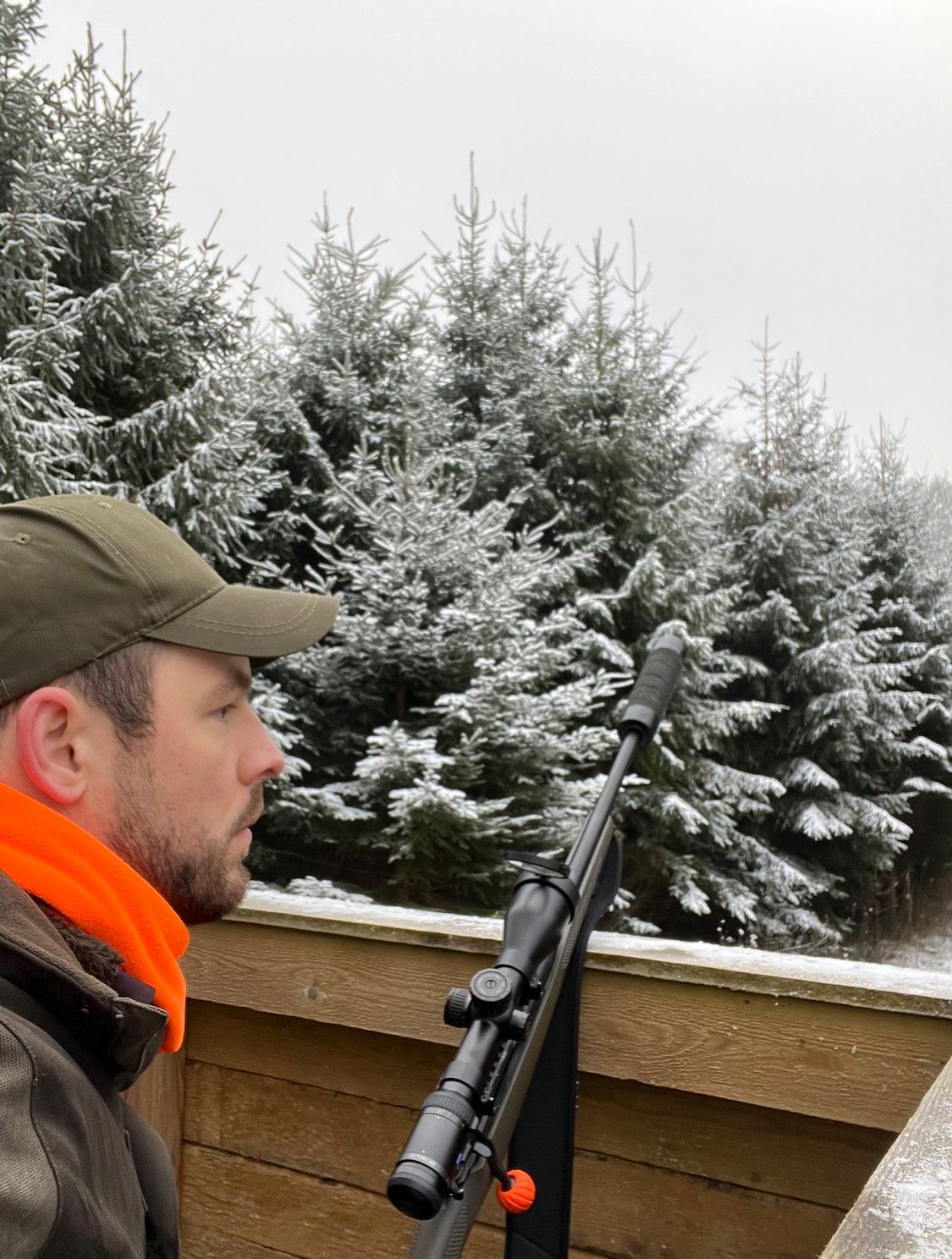
Additional suggestions for beginners could include a durable backpack, a first aid kit for safety, and a headlamp or flashlight for low-light conditions. These items ensure both preparedness and practicality in the field.
Training never stops
Once you've passed your shotgun and rifle tests, the training doesn't stop there. Now the fun begins! It's one thing to train to crush clay pigeons or shoot holes in a target at the range, it's another thing to shoot at a live animal. You owe it to yourself and the game to be as prepared as possible.
Make sure you practice hunting-relevant shooting with your rifle and test a lot of things; standing, sitting, prone, with and without a rest... anything you might encounter while hunting. Remember, prone shooting, which is very common on the range, is rarely possible in actual hunting situations because you often lack a proper backstop when you’re lying down.
Familiarizing yourself with shooting from a standing position using a shooting stick is invaluable. In hunting situations, where prone shooting is uncommon, a shooting stick you're comfortable with can be incredibly beneficial.
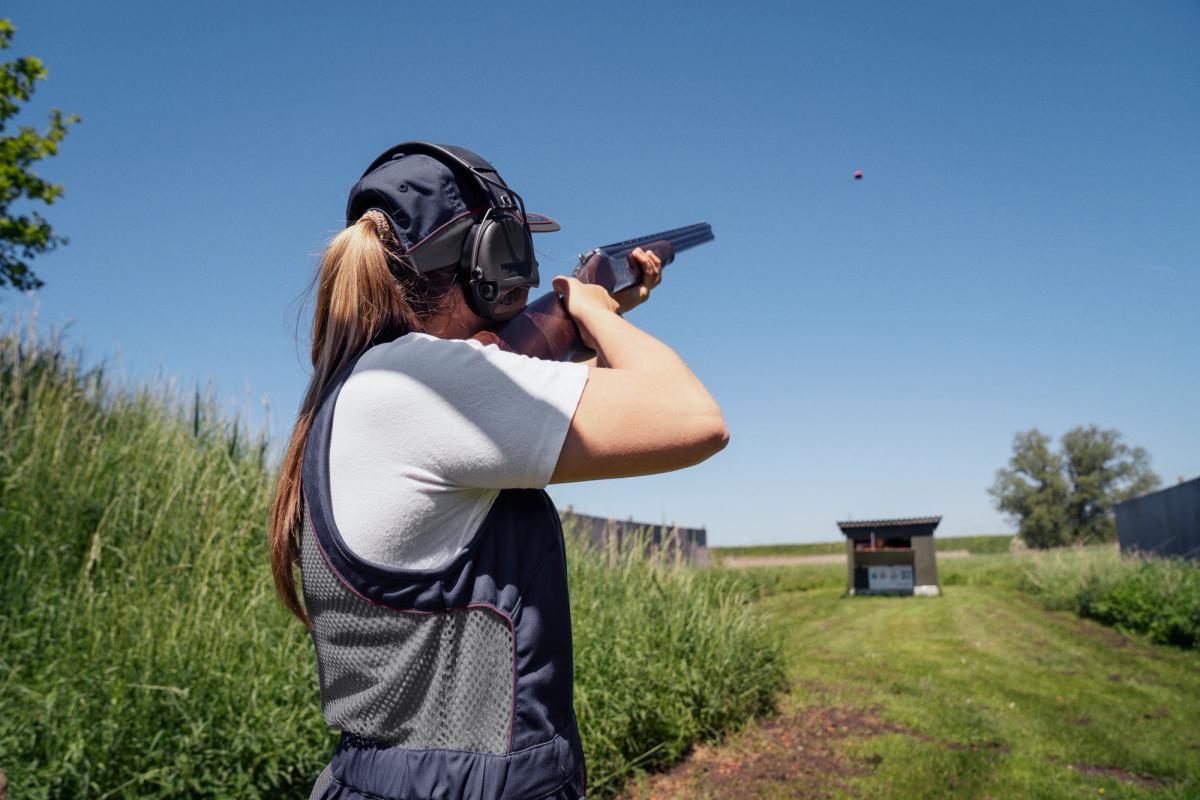
When it comes to shotgun shooting, I would recommend trying your hand at a sporting clay course.
It is, in my opinion, the closest you can get to the real deal, because the clay pigeons come in many different ways, just like the game will do in real life. Yes, it's anxiety-provoking to stand on the Sporting range for the first time in front of others. But it's worse to stand on a hunt and feel unprepared and overexcited because you're shooting holes in the air.
Going on a hunt...
Being invited to join on a hunt without a network can be difficult. However, with today's social media, the distance between hunters has shrunk and social media can be a great place to search for hunting experiences! Be open to all opportunities, including the regulation of nuisance game (rabbits, foxes, crows, etc.), or the possibility of trading some labor for a good experience.
In my opinion, a willing and committed new hunter who wants to take part in management is worth their weight in gold to a consortium. So, if you see an opportunity for membership somewhere, make sure you get involved in everything, including the work.
During the hunt
Sooner or later the day will come – your first hunt. You probably won’t sleep so much the night before because you are excited. But of course, you've read the following advice, so you're excited and well prepared!
Rifle hunting
If you've joined a hunting consortium/syndicate, it's a good idea to ask if one of the experienced hunters would like to join you on your first few hunts. Hunters LOVE to share experiences and guidance. You've probably already noticed this when you've been to the range, or when you're reading this article for that matter.

Whether you're going out on your own or not, I would recommend that you spend some time in the terrain with a pair of binoculars before the start of the hunting season. That way, you'll get to know the land and learn where the animals are. Look for scrapes on the ground, rubs on a tree, excrement, and bedding areas. When you find these or spot animals, think about where you can position yourself to be able to make a safe shot.
Remember that animals survive every day. That is, they aim to get maximum calorie intake on minimum consumption. Therefore, they will typically be in places with food, shelter, and sun.
Rifle hunting offers two main methods: staying at one spot or stalking. Staying in a spot, and waiting for the game to appear reduces movement, noise, and scent spread but limits your range.
Stalking involves moving through the terrain, covering more ground but increasing the likelihood of being detected by the game. Move quietly and carefully to minimize noise and avoid detection. Lower your steps, roll your foot from heel to toe and keep your legs apart to prevent your pants from rustling. Watch for noisy leaves and branches and frequently use your binoculars.
Remember, stalking requires slow, attentive movement.
Make sure to always walk into a headwind as much as possible. Especially when stalking an animal. Your scent will give you away if it reaches its nostrils.
Additional things to consider, when youre rifle hunting:
Vegetation: Make sure to stay as hidden as possible in the vegetation of the terrain. Both when you are sitting or walking.
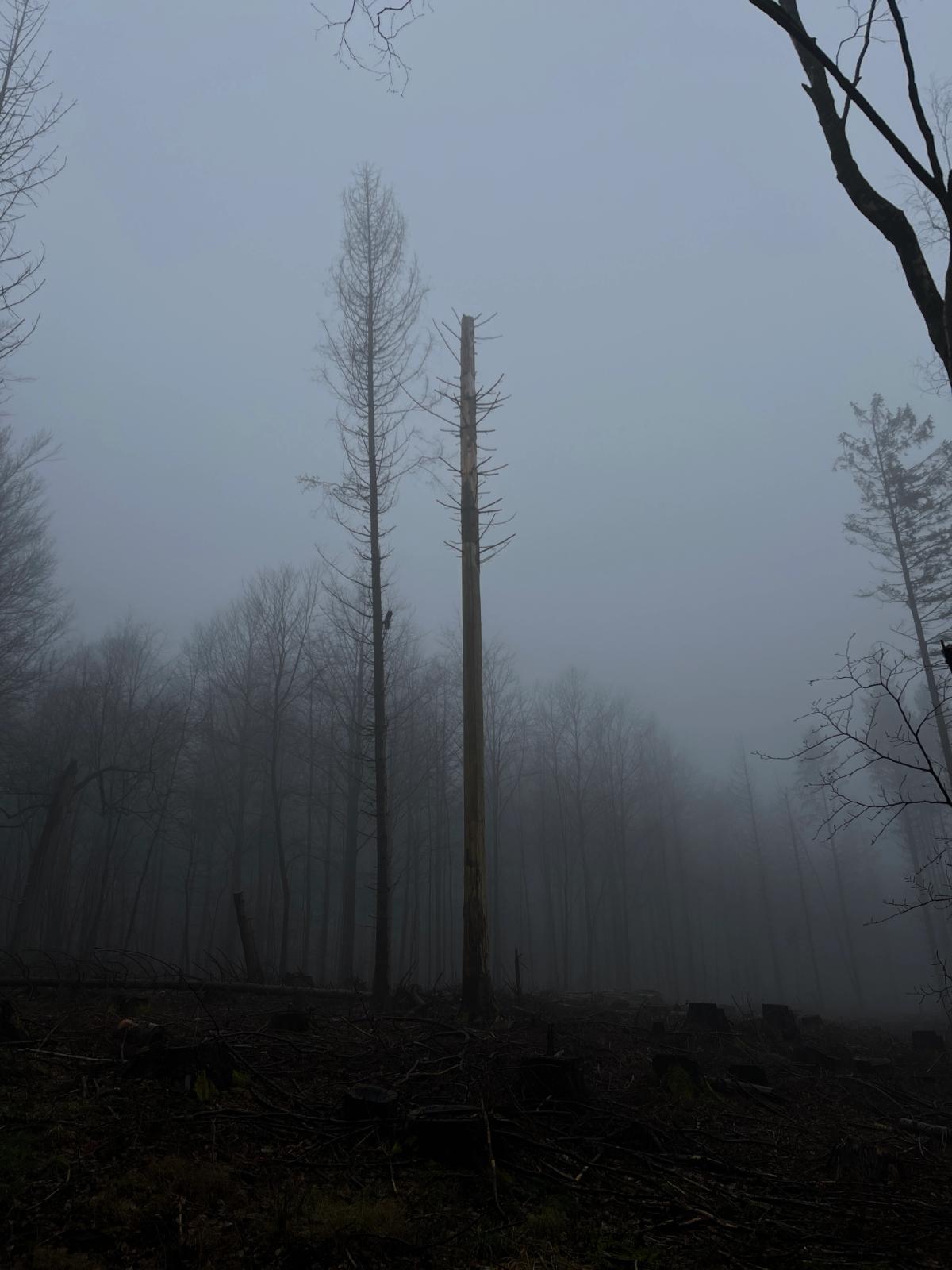
If you're hunting around in the open, you're very easy to spot.
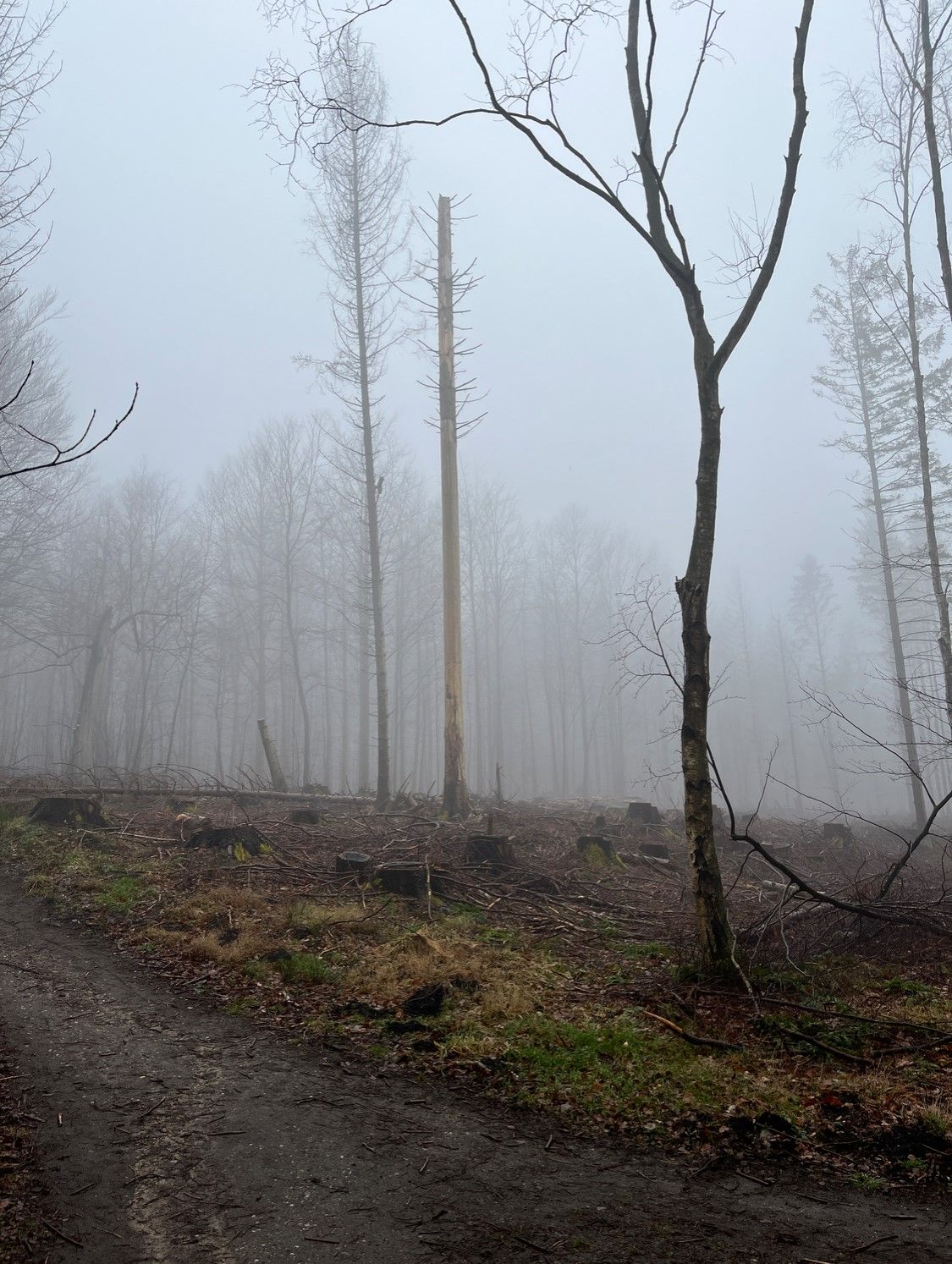
Sunlight: Stay in the shadows. As warm as the sun is, you're also easier to see if you're standing in it. It can even be an advantage to have the sun at your back when stalking animals, as they will have a hard time looking in your direction.
Background: A moving silhouette is easy to see, so make sure you have some background behind you to help you blend in with nature.
Movement: Your movements should be slow. Not only as you move through the terrain, but also when you bring your binoculars up to your eyes or prepare your rifle for a shot. A pair of gloves are a good thing, to cover your hands. In the summer you can use thin cover-gloves as the goal is to cover your skin, not keeping your hands warm
When you get a shooting opportunity, and it will come, remember to stay calm, know your limitations, and don't take chances. A close call is still much better than a bad shot, and the former will give you more incentive to get back out there than the latter.
Anyone can have a bad day and accidentally wound an animal, and it's not a good feeling. However, the feeling is way worse, if you know that you took a shot, that you probably shouldn't have taken.
Hunting with a shotgun
There are many different kinds of hunts you can do with a shotgun. Here, I've chosen to focus on community hunts in the fall and winter. As I am a Danish hunter, some of these traditions and rules that I will describe in the following might not be common in other countries, but always, be aware of local traditions as the world of hunting is full of them, and we like to keep up with them.
There are a lot of fine traditions that most syndicates uphold when they organize joint hunts. For example, hats are never worn during the parole or parade (except for female hunters) and you also tip your hat when you are put on post. Other times, the individual syndicate may have made some small "local traditions" that, when not abided, might trigger a little fine after the hunt.
For example, I have been a member of a syndicate where you were not allowed to enter the hunting lodge until everyone had arrived. If you did, it resulted in a small fine. It's a good idea to ask one of the experienced members of the syndicate, and if you've been invited on a hunt, ask the person who sent the invitation if there are any traditions or rules you need to take into account.
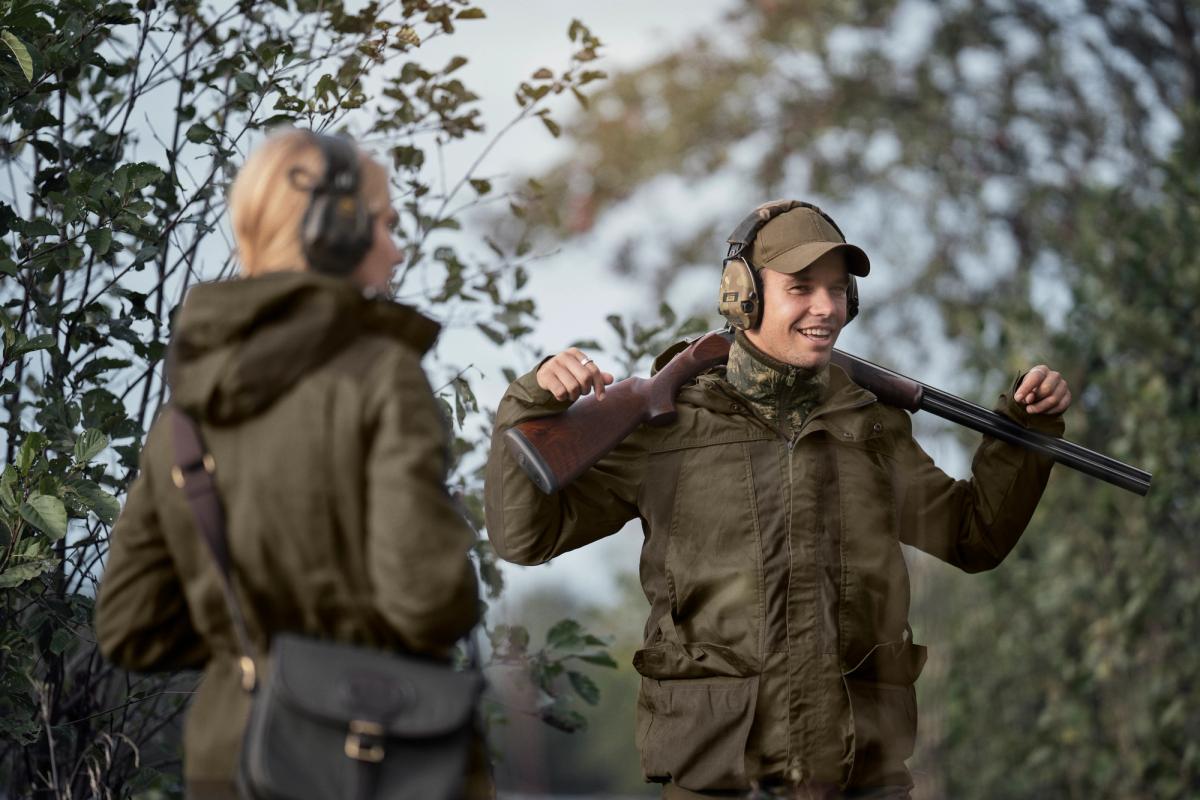
Fall hunts are a great mix of togetherness and great hunting experiences. But when many people are hunting together, there are also many factors to keep an eye on. That's why it's important to never be in doubt.
In general - Ask! Ask! Ask! No one expects you to know everything in advance and it's only helpful for you to admit that you're new, because then you're guaranteed to get all the help you need. It's always allowed to ask follow-up questions, both when before and during the hunt. A lot of things happen on a collective hunt - many shooters are posted and you may not be able to see them all, the beaters move forward and dogs working. Therefore, you must always know what's going on, what directions you can shoot, and where you absolutely cannot shoot. You must not be in any doubt about how the hunt is run. And if you find yourself in any sort of doubt – don’t take the shot.
Tell the leader of the hunt and the persons responsible for putting the hunters on their posts, that you are a new hunter. They'll be more likely to take extra care of you and give you some of the easier spots with a good overview. Some will also offer to stand next to you, and if they don’t, and you would like that – then ask.
It's the same with shotguns as with rifles - you can never pull back a shot once you've pulled the trigger. You may have to listen to some good-natured teasing for passing up an opportunity that more experienced hunters would have taken, but it's still much better than having taken the shot when you shouldn't have.
Finally, remember this little saying: "First the game, then the gear, then the hunter." And if you've acquired a hunting dog, prioritize it first! It's important to get your gun cleaned, dried, and oiled, and get your gear in order before you hit the couch and daydream about the day's hunting experiences and the next ones to come.
As we say in Denmark, “Knæk og bræk” ~ Break a leg.
